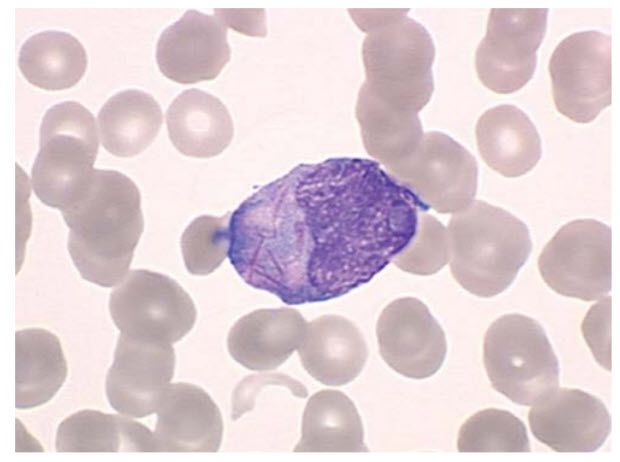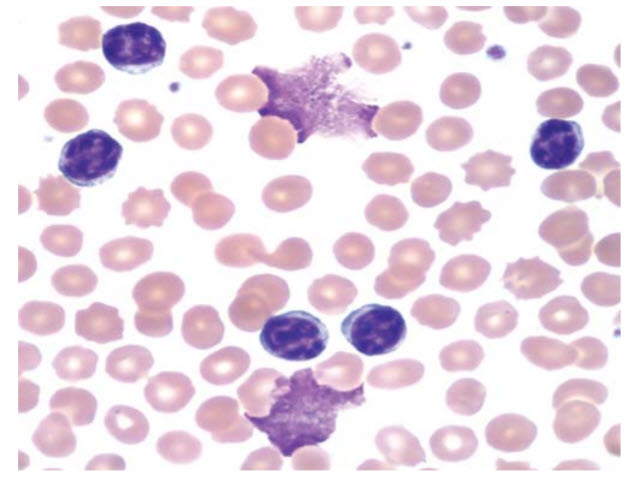Question 1#
A 71-year-old man with a history of hypertension and hyperlipidemia presents with fatigue, diffuse joint pain, decreased appetite, and a weight loss of 5.44 kg (12 lb) over the last 4 months. Physical examination reveals splenomegaly. Laboratory studies reveal the following:
- Leukocyte count 29,000/mm3
- Hemoglobin 9.1 g/dL
- Mean corpuscular volume 85 fL
- Platelets 122,000/mm3
Cytogenetic studies are performed and reveal an abnormal chromosome 22.
Which of the following is the appropriate treatment for this disease?
A. MethotrexateB. All-trans-retinoic acid
C. Imatinib
D. Bone marrow transplant
Correct Answer is C
Comment:
Imatinib. The patient in this question is presenting with leukocytosis, normocytic anemia, and thrombocytopenia. The abnormal chromosome 22 is likely the Philadelphia chromosome, a byproduct of the reciprocal translocation of chromosomes 9 and 22 that forms an abnormal BCR–ABL fusion gene, that ultimately results in aberrant tyrosine kinase activity. This abnormal fusion gene suggests the diagnosis of chronic myeloid leukemia (CML). Tyrosine kinase inhibitors, such as imatinib, are critical in the treatment of CML and act by binding to the ATP binding site of the BCR–ABL fusion gene so that it is unable to convert into its active form. (A) Methotrexate alters the metabolism of folic acid. Although it is commonly used in several other cancers and autoimmune conditions, it has no role in the treatment of CML. (B) All-trans-retinoic acid is the carboxylic acid form of vitamin A and is used in acute promyelocytic leukemia, not in the treatment of CML. (D) Bone marrow transplant is a viable option for curing CML, but imatinib is the first-line treatment.
It is helpful to know peripheral blood smear findings for the different types of leukemia in preparation for the internal medicine shelf examination. In acute myeloid leukemia (AML), Auer rods are diagnostic (Figure below).

In chronic lymphocytic leukemia (CLL), smudge cells are diagnostic (Figure below).
